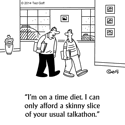Your voices needed to help a worthy project
 Can the sharing of stories bring a community together?
Can the sharing of stories bring a community together?
It worked in the olden days, but has become a lost art in the age of television, internet, and videogames. Robert Putnam's book "Bowling Alone" described a society where isolation reigns and communities are frayed.
My friend and colleague Cynthia Kurtz has applied for a Knight News Challenge grant to develop web2.0 software precisely to facilitate the gathering, sharing and passing on of stories that used to go on around the campfire or village square. The Knight folks want the public (that means you) to review and comment on the applications. It would be doing a great service if you would visit the site here and weigh in on Cynthia's application.
Here's how she describes the project:Long ago, story caretakers tended the diverse stories of the community: eliciting, understanding, maintaining. But those traditions have declined as commercial storytelling rose and community coherence fell. The physical-digital split means that today older people tell stories in community centers while younger people tell them on Facebook. People still tell stories, but no one is bringing all of the stories together into community-wide patterns, making sense of those patterns, and helping the stories get to where they need to be in times of need. We are building a free and open source software package called Rakontu ("tell a story" in Esperanto) that will help communities share and work with raw stories of personal experience for mutual understanding, conflict resolution and decision support. By supporting and bridging online and offline storytelling, Rakontu will help communities regenerate the sustaining functions of story caretakers so that they can take better care of their stories again.
An important part of the project is how this would bring benefit to communities. Cynthia explains it this way:
Rakontu will help communities tell, annotate and connect stories; discover insight-creating patterns in them; and use stories to resolve conflicts and make decisions together. This degree of support is only available today through the help of experienced narrative practitioners. Rakontu will embody understandings about narrative in communities so that people will not have to know anything about narrative to benefit from its use. Some possible outcomes are better understandings of opposing perspectives, a greater diversity of voices being heard, better consensus on tough choices, more problems dealt with before they get worse, safer streets, fewer footholds for extremism and paranoia, and greater common strength in times of crisis.
I've written in this blog, over and over, about the use of stories for knowledge sharing, learning, and creating insight. You're probably tired of reading about it. But think about this: we should be using every tool at our disposal to help bring our communities together, to combat the "bowling alone" syndrome, and make our neighborhoods a better place to live. That's what Rakontu can do, and I hope you'll visit the Knight News Challenge site and support Cynthia's application.
(Disclosure: I have worked with Cynthia on this grant and will be conducting community trials of the software if the grant is awarded. Therefore I have a vested interest in getting the grant approved.)
Tags:
community, narrative, virtual communities, sensemaking, storytelling











